If you've ever wondered, can I freeze sourdough dough before baking? You're not alone. Many sourdough bakers love the convenience of preparing dough ahead of time, storing it in the freezer, and baking fresh loaves later. Or perhaps your dough is ready, but you don’t have time to bake it right away. So, what’s the best option? Let it overproof in the fridge or freeze it instead?"
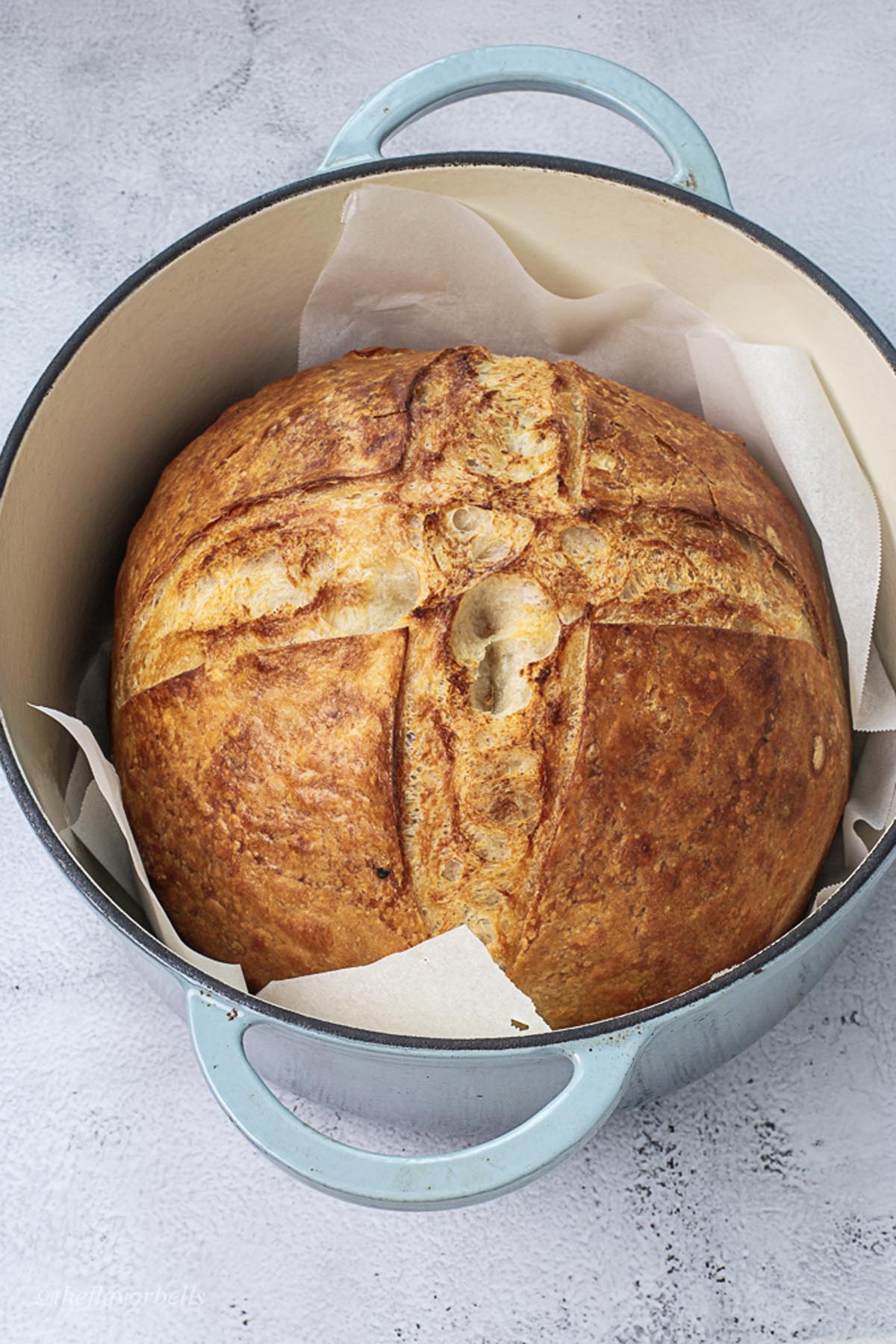
In this post, we’ll dive deep into everything you need to know about freezing sourdough bread dough, how to bake frozen sourdough, whether freezing sourdough kills probiotics, and how to freeze sourdough starter. We’ll also look at options like freezing sourdough pizza dough, the benefits of freezing sourdough bread, and much more.
Jump to:
Why Freeze Sourdough Dough?
Freezing sourdough dough offers convenience without sacrificing the artisanal quality of your homemade bread. Whether you’re working with sourdough discard, an active sourdough starter, or want to prepare pizza dough ahead of time, freezing opens the door to make-ahead baking.
Here are some benefits of freezing sourdough bread:
- Time-saving: Skip the bulk fermentation next time.
- Batch baking: Make several loaves at once and freeze for later.
- Flexibility: Perfect for unpredictable schedules or last-minute entertaining.
- Reduces waste: Instead of discarding extra dough, just freeze it!
When to Freeze Sourdough Dough
You can freeze sourdough at any stage after bulk fermentation, but each method requires different handling:
1. Before Shaping (Post-Bulk Fermentation)
- Best for: Long-term storage with flexibility
- How: Portion dough, wrap tightly, and freeze
- To use: Thaw overnight in fridge, then shape/proof as normal
2. After Shaping, Before Final Proof
- Best for: Preserving structure with minimal effort
- How: Freeze shaped loaf on tray, then bag once solid
- To use: Thaw 4-6 hours at room temp, then proof fully before baking. But take care to nicely dust the banneton with flour as the frozen dough can get really wet and stick to the banneton while proofing.
3. After Final Proof (Ready-to-Bake Frozen)
This is my favorite way to freeze sourdough.
- Best for: Convenience (no thawing needed)
- How: Fully proof, freeze solid on parchment, then bag
- To bake: Place frozen dough directly in preheated oven
- Key: Only works with sturdy shapes (batards, boules) – delicate designs may collapse
Pro Tips:
- Always use airtight packaging to prevent freezer burn
- Label with date (dough keeps 1 month for best quality)
- For discard: Freeze flat in bags for easy portioning
How to Freeze Sourdough Dough
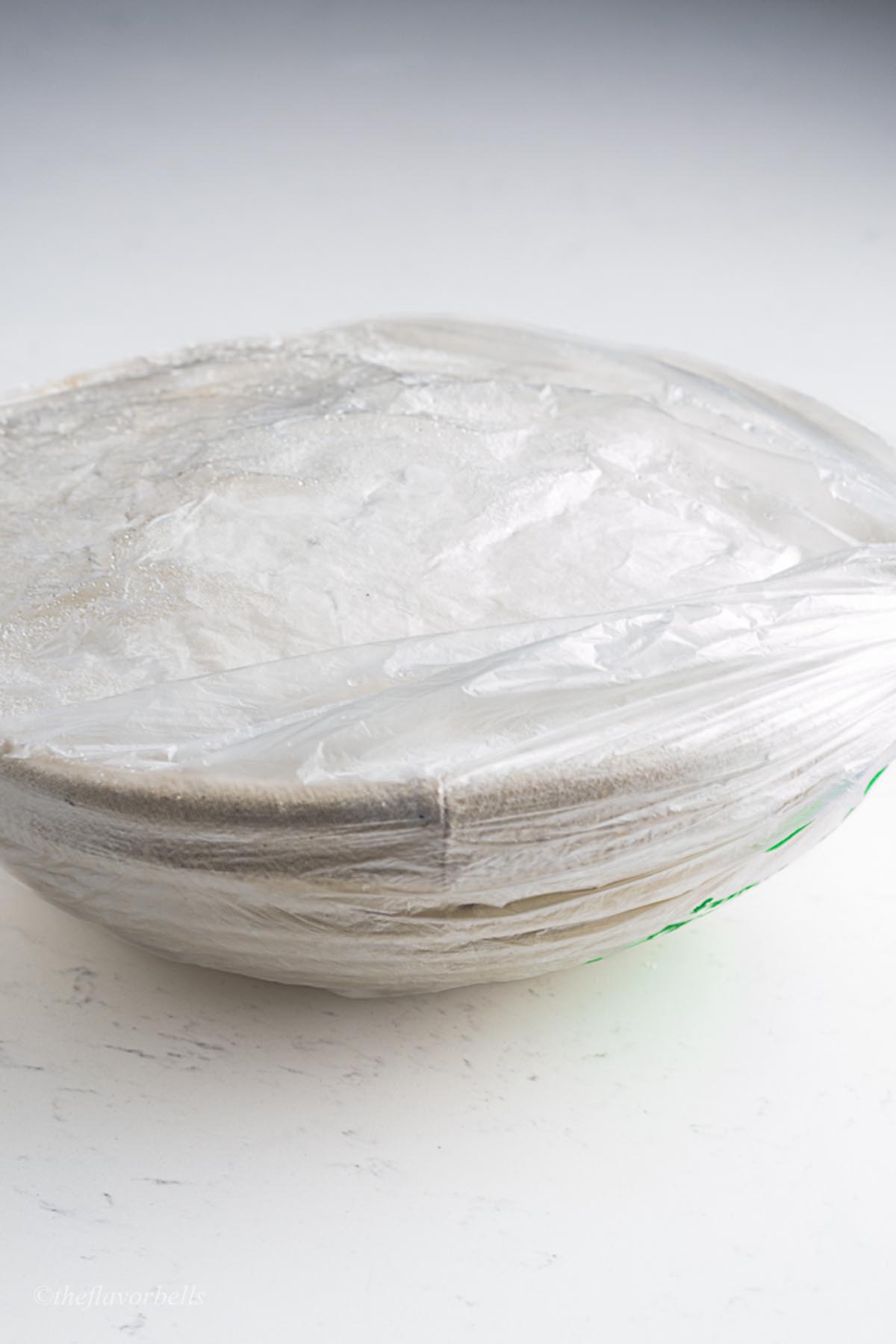
Here’s how to freeze sourdough bread dough properly:
- Complete bulk fermentation: Let the dough ferment at room temp until doubled.
- Shape the dough: Form it into a boule or batard and place in the banneton if you want to freeze a shaped loaf.
- Light dusting of flour: Prevents sticking.
- Wrap tightly: Use plastic wrap or reusable wraps.
- Place in airtight container or freezer bag: Prevents freezer burn.
- Label it: Include date and dough type.
Pro Tip: If you plan to freeze pizza dough, divide it into pizza-sized portions before freezing.
How Long Can You Freeze Sourdough Dough?
Sourdough dough can be frozen for up to 2 months. Beyond that, it may lose rise and flavor. Use within 4-6 weeks for best results.
- Freezing sourdough dough: Up to 2 months
- Freezing sourdough pizza dough: 1–2 months
- Freezer bread dough shelf life: 4–6 weeks optimal
How to Thaw and Bake Frozen Sourdough Dough
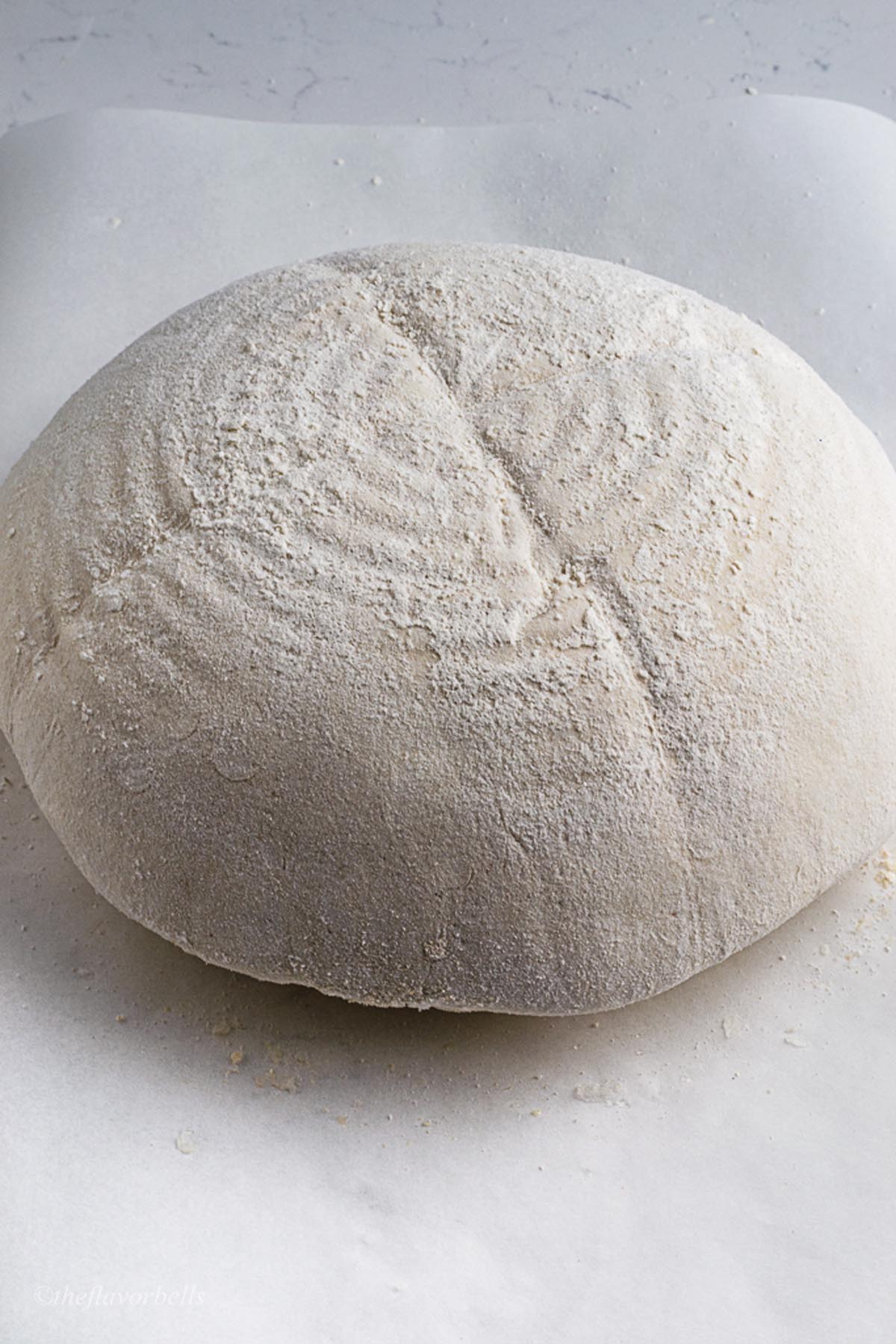
Step-by-step guide to baking frozen sourdough:
- Thaw in fridge overnight: Place the frozen dough in the fridge for 12–18 hours.
- Bring to room temperature: Leave on counter for 1–2 hours.
- Final proof: Let the dough rise until puffy, which may take 2–4 hours.
- Score the dough: Use a lame or sharp knife.
- Bake: Bake in a preheated oven at 450°F (232°C) for 30–35 minutes until golden and crusty.
Frozen sourdough dough may take longer to proof. Be patient. The dough should pass the poke test before baking.
Does Freezing Sourdough Kill Probiotics?
This is a common concern. The short answer: freezing pauses microbial activity; it doesn’t kill the probiotics outright. Once thawed and baked, many of the live cultures will be diminished due to oven heat, but this is true for all baked sourdough bread.
- Freezing sourdough starter: Good for preserving backup cultures.
- Probiotic activity: Resumes after thawing if the starter is active.
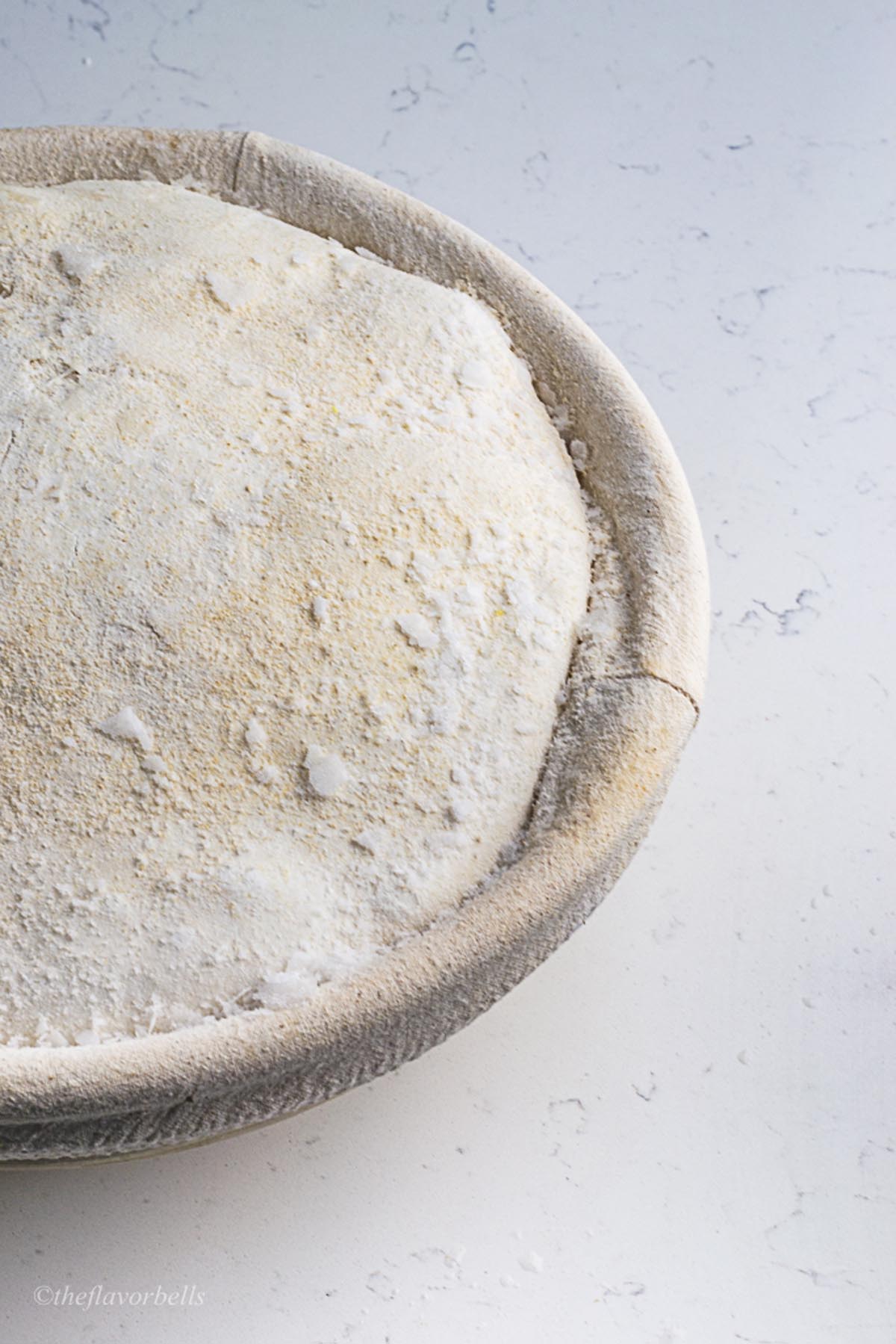
Can You Freeze Sourdough Starter?
Absolutely. Freezing sourdough starter is a great way to preserve it long term.
How to Freeze Sourdough Starter:
- Feed your starter and let it become active.
- Place in a clean jar or freezer-safe container.
- Label and freeze.
Thaw in the fridge overnight and feed over several days to revive.
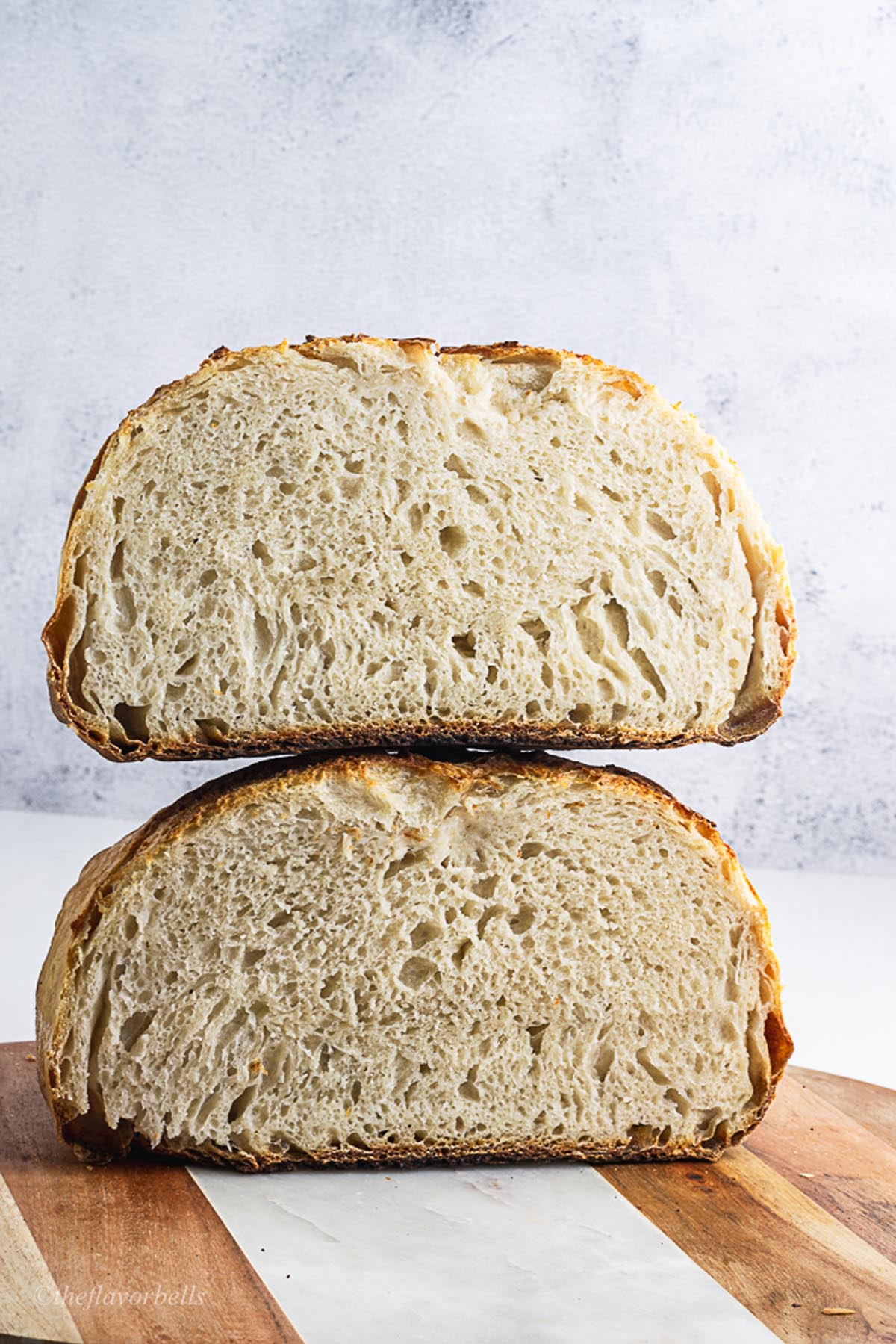
Freezing sourdough dough is a powerful way to make your baking schedule more flexible and reduce waste. From freezing sourdough starter to baking frozen loaves and making sourdough pizza, the freezer can be a baker’s best friend. The key is to freeze at the right time (after shaping and before final proof), thaw gradually, and give enough time to proof before baking.
More sourdough Basics
- Coil fold Vs Stretching and Folding
- Sourdough Hooch
- Bassinage
- Sourdough temperature and time guide
- Autolyse
- Dehydrating sourdough starter
Whether you bake bread regularly or only occasionally, learning how to freeze sourdough bread dough and revive it later can save you hours and improve your baking game. So go ahead—make that extra batch, shape your dough, and freeze away!


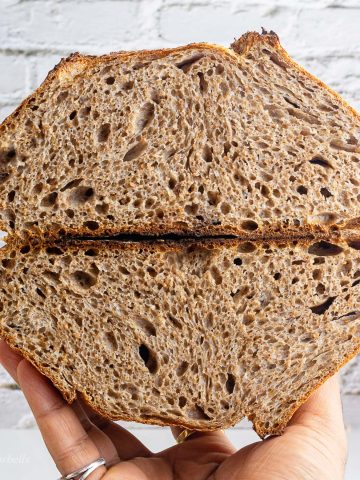



Leave a Reply